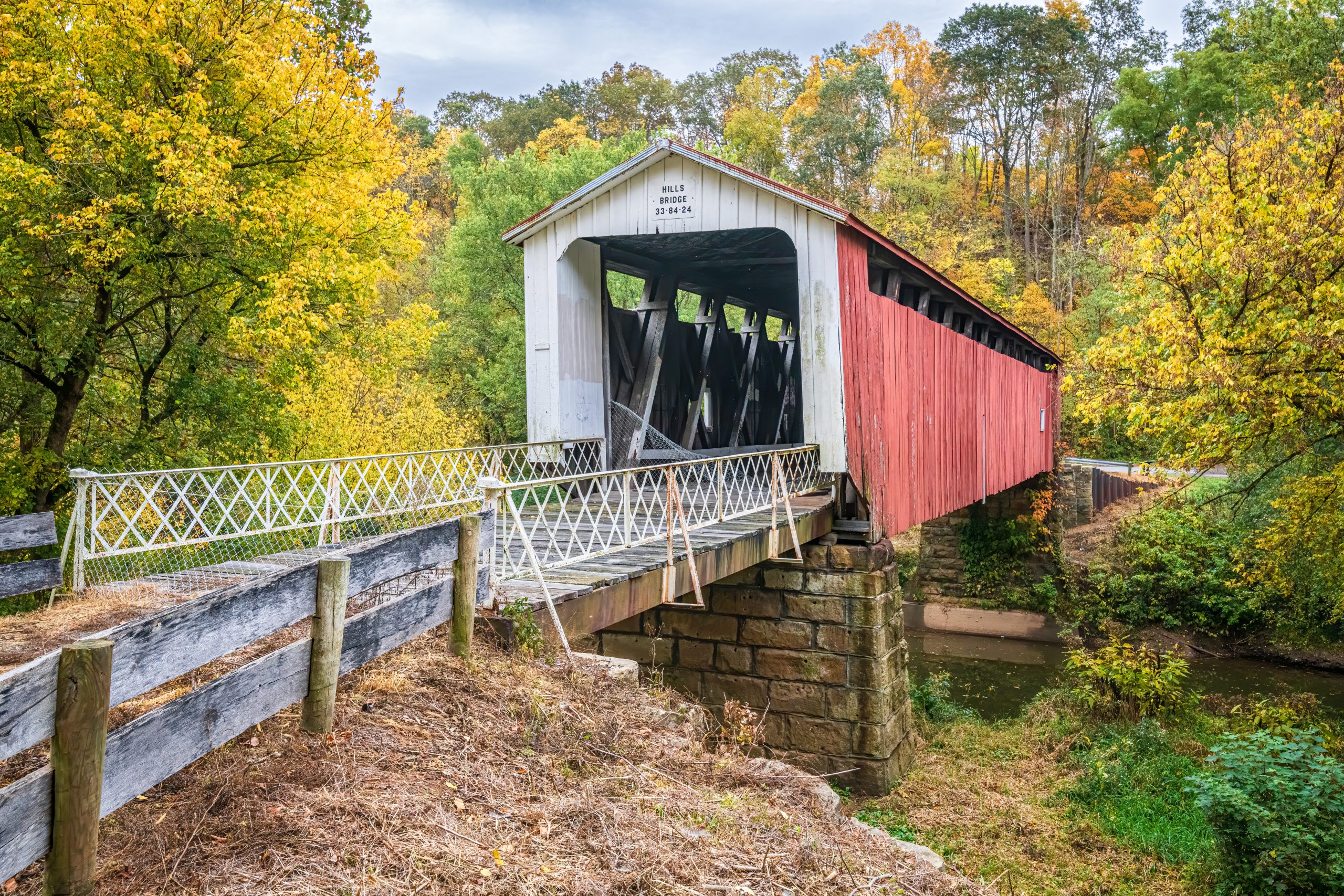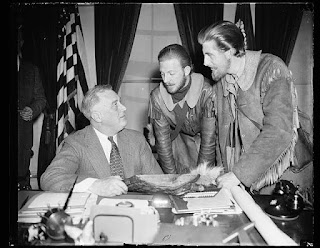I was 15, a junior high student at Marietta High School. Students were excused from class that day. FDR’s son in military uniform helped his father up a ramp to the lectern. I was very close to the ramp (and)… could see that FDR had metal braces on his legs. I heard them “clank” as he passed near me. I think my friend Jack Lowe was with me. (When) FDR dedicated the Gutzon Borglum (he also sculpted the figures on Mount Rushmore) monument, “Memorial to the Start Westward of the Nation”,….we all moved down the park near the river to see it more closely. The speech platform was nearer Front street, as I remember.
President Roosevelt speaks in Muskingum Park, Marietta OH
The President spoke for about 20 minutes. “Two old friends of mine, Bob (Senator Robert) Bulkley and Bob (Congressman Robert) Secrest invited me to come to Marietta in 1938. It seemed a long way off. I told them I’d come if I possibly could. So here I am.” FDR’s speech honored the pioneer spirit of the original settlers. He also noted the significance of the Northwest Territory expansion of the nation’s borders and its forward-looking governance provisions.
Sesquicentennial reenactors invite President Roosevelt to Marietta; caption below from Library of Congress. Digital file from original negative http://hdl.loc.gov/loc.pnp/hec.47393
PRESIDENT MAY ATTEND NORTHWEST TERRITORY CELEBRATION AT MARIETTA, OHIO. WASHINGTON, D.C. MARCH 21. AFTER RECEIVING A WOODEN PLAQUE MADE FROM THE OAK THEY ARE USING TO BUILD FLAT-BOTTOMED BOATS SIMILAR TO THOSE IN WHICH THE PIONEERS FLOATED DOWN THE OHIO RIVER, PRESIDENT ROOSEVELT TODAY INDICATED HE WOULD ATTEND THE 150TH ANNIVERSARY CELEBRATION OF CREATION OF THE NORTHWEST TERRITORY AT MARIETTA, OHIO, SOMETIME NEXT JULY. DAVID PETERSON, CHICAGO IL, AND MONTE PARR, MINGO JUNCTION, OHIO, MEMBERS OF AN EXPEDITION REENACTING MARCH OF THE PIONEERS WHO BLAZED THE TRAILS INTO THE NORTHWEST TERRITORY, ARE SHOWN MAKING THE PRESENTATION
- Notable quotes from FDR’s presidency included this from his Marietta speech:”Let us not be afraid to help each other – let us never forget that the government is ourselves, not an alien power over us. The ultimate rulers of our democracy are not a president and senators and congressmen and government officials but the voters of this country.”
- Nearly 80 people suffered “heat prostration” because of the extreme hot weather. One man collapsed in front of the speaker’s platform. FDR expressed concern about those affected.
- He complimented the Mayor P. W. Griffith on the crowd control and remarked he had “never had seen it surpassed.” The crowd was estimated at 75-100,000 people.
- FDR complimented the Marietta Garden Club floral decorations on the speaker’s platform. “Well, that’s beautiful,” he noted upon seeing it, “I’ve never seen anything like that before.”
- Author James MacGregor Burns tells of “a little old woman” in Marietta who “symbolized much of the popular feeling (about Roosevelt) when she knelt down and reverently patted the dust where he left a footprint.” This illustrated often ambivalent feelings towards FDR; many reviled him; others almost worshiped him.
- The President left Marietta on the train bound for Covington, KY. for a speech at 3:30 that day. His trip continued on to the west coast. It included speech-making stops in several states to promote his programs and endorse liberal democrats.
- After visiting San Francisco, naval installations, and Yosemite National Park, he boarded the cruiser USS Houston for nearly a month of recreation, traveling down the Mexican coast fishing and sightseeing. I found that curious. It seems unlikely that a President today could enjoy a leisurely vacation on a naval vessel. Highlights of the trip for Roosevelt were landing a 240 poind shark and (FDR’s scientist friend) Dr. Waldo Schmitt’s discovery of a new palm on Cocos Island, which he named Rooseveltia frankliniana.
FDR’s visit remains a highlight in Marietta’s history and a vivid memory to all who were there.



